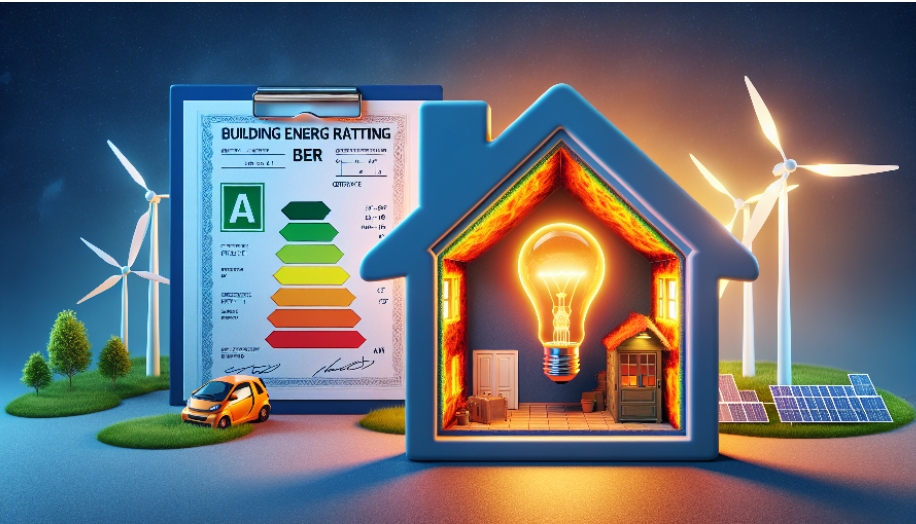Building Energy Certificates: An Overview for Architects and Engineers

As architects and engineers, understanding Building Energy Certificates is crucial for designing and constructing energy-efficient buildings. In this comprehensive overview, we will delve into the world of Building Energy Certificates, with a particular focus on BER Cert.
Building Energy Certificates are official documents that provide information about a building’s energy performance. They are designed to help property owners, tenants, and potential buyers make informed decisions about a building’s energy efficiency and potential for improvement.
Types of Building Energy Certificates
There are several types of Building Energy Certificates, each with its own specific purpose and requirements. Some of the most common types include:
- Energy Performance Certificates (EPCs)
- Building Energy Rating (BER) Certificates
- LEED Certifications
- BREEAM Certifications
The Importance of Building Energy Certificates
Building Energy Certificates play a vital role in promoting energy efficiency and sustainability in the built environment. By providing clear and accurate information about a building’s energy performance, these certificates can:
- Help property owners identify areas for improvement
- Encourage the adoption of energy-efficient technologies and practices
- Reduce greenhouse gas emissions and combat climate change
- Increase property values and attract environmentally-conscious tenants
Benefits for Architects and Engineers
For architects and engineers, Building Energy Certificates offer a range of benefits, including:
- Demonstrating expertise in energy-efficient design and construction
- Differentiating their services from competitors
- Helping clients meet regulatory requirements and achieve sustainability goals
- Contributing to the fight against climate change
Building Energy Rating (BER) Certificates
Building Energy Rating (BER) Certificates are a specific type of Building Energy Certificate that is widely used in Ireland. These certificates provide a standardized way of measuring and comparing the energy performance of residential and commercial buildings.
How BER Certificates Work
BER Certificates are based on a comprehensive assessment of a building’s energy performance, taking into account factors such as:
- Building fabric and insulation
- Heating and cooling systems
- Ventilation and air tightness
- Lighting and electrical appliances
The assessment is carried out by a qualified BER Assessor, who uses specialized software to calculate the building’s energy performance and assign it a rating on a scale from A to G, with A being the most energy-efficient.
Benefits of BER Certificates
BER Certificates offer a range of benefits for property owners, tenants, and potential buyers, including:
- Providing a clear and easy-to-understand measure of a building’s energy performance
- Identifying areas for improvement and potential cost savings
- Demonstrating compliance with building regulations and energy efficiency standards
- Increasing property values and attracting environmentally-conscious tenants
The Role of Architects and Engineers in BER Certification
As architects and engineers, you play a crucial role in ensuring that buildings meet the requirements for BER cert search. This involves:
- Designing energy-efficient buildings from the ground up
- Specifying high-performance materials and systems
- Incorporating renewable energy technologies where appropriate
- Collaborating with BER Assessors to ensure compliance with certification requirements
Best Practices for BER Certification
To maximize the benefits of BER Certification, architects and engineers should follow best practices such as:
- Conducting early-stage energy modeling to optimize building performance
- Specifying high-performance building envelopes and HVAC systems
- Incorporating daylighting and natural ventilation strategies
- Selecting energy-efficient lighting and appliances
- Providing clear and detailed documentation to support the BER assessment process
The Future of Building Energy Certificates
As the world continues to grapple with the challenges of climate change and energy security, the role of Building Energy Certificates is likely to become even more important in the years ahead.
Emerging Trends and Technologies
Some of the emerging trends and technologies that are likely to shape the future of Building Energy Certificates include:
- The increasing use of smart building technologies and the Internet of Things (IoT)
- The growing adoption of renewable energy technologies such as solar and wind power
- The development of more advanced energy modeling and simulation tools
- The increasing focus on embodied carbon and lifecycle assessment
The Role of Architects and Engineers
As architects and engineers, you have a vital role to play in shaping the future of Building Energy Certificates and promoting energy efficiency in the built environment. This involves:
- Staying up-to-date with the latest trends and technologies in energy-efficient design and construction
- Collaborating with clients, contractors, and other stakeholders to achieve sustainability goals
- Advocating for stronger energy efficiency policies and standards at the local, national, and international levels
Conclusion
Building Energy Certificates are a powerful tool for promoting energy efficiency and sustainability in the built environment. By providing clear and accurate information about a building’s energy performance, these certificates can help property owners, tenants, and potential buyers make informed decisions and drive the adoption of energy-efficient technologies and practices.
As architects and engineers, you have a crucial role to play in ensuring that buildings meet the requirements for Building Energy Certificates, and in shaping the future of energy-efficient design and construction. By staying up-to-date with the latest trends and technologies, collaborating with stakeholders, and advocating for stronger policies and standards, you can make a real difference in the fight against climate change and the transition to a more sustainable built environment.

Source: Building Energy Certificates: An Overview for Architects and Engineers




